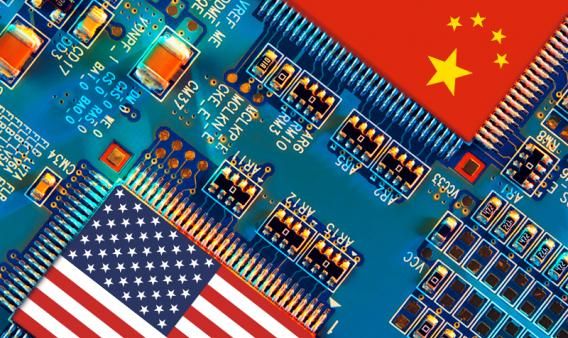China and the United States have taken different approaches to establishing technology ecosystems, but they have collaborated extensively over the years. However, we are currently at a crossroads in technological networks, with the possibility of disconnecting. What types of technology collaboration are effective in the face of rising barriers? How are technology leaders redefining their business models through innovation, artificial intelligence, and technology, and what is being done to develop alternatives to avoid a wider technological divide? The scientific and technology agreement between the United States and China, which began in 1979 when the two countries established diplomatic relations, is one such crucial collaboration that has delivered extraordinary benefits over the decades. However, this cooperative link is today at a crossroads. As the deal comes up for renewal at the end of August, certain elements in the United States Congress, dubbed “China hawks,” are vehemently opposing it. Their arguments, which are concentrated on concerns about China’s technological breakthroughs, may be well-intentioned, but they neglect the nuanced reciprocity that has defined the success of this relationship.
At the heart of scientific advancement lies the power of ideas, nurtured by the human intellect. The essence of cross-border scientific collaboration is to cultivate new ideas that pave the way for groundbreaking discoveries. Regrettably, some detractors fail to acknowledge that this partnership has been mutually enriching. While China has undoubtedly gained from this collaboration, the United States has equally reaped significant rewards. Crucial strides in fields such as forestry, earthquake detection, medicine, health, and agriculture have been facilitated through this partnership.
A significant aspect of this collaboration involves the exchange of personnel across various fields. Chinese scientists have enriched American scientific establishments, contributing substantially to the U.S. economy and its scientific prowess. Joint research papers authored by both U.S. and Chinese scientists have contributed a wealth of knowledge across diverse domains. Additionally, the phenomenon of a “brain drain,” stemming from restrictive U.S. policies, has impacted scientific output, indicating the invaluable contributions of Chinese and Chinese-American scholars.
Renewing the collaboration agreement assumes even greater importance in light of China’s emergence as a scientific powerhouse. While China initially gained more from this partnership, its transformation into a formidable scientific force now positions it to contribute more substantially. Without the agreement, seizing the benefits of Chinese breakthroughs becomes challenging, hindering a comprehensive understanding of their advancements. The repercussions extend beyond bilateral relations, as it might isolate the United States in the international scientific arena. China’s willingness to collaborate with other nations in the realm of science makes the U.S.’s stance appear increasingly out of sync.
Believing that China’s growth can be curtailed by restricting its access to intellectual resources is a flawed approach. China’s burgeoning scientific community, bolstered by world-class institutions, is driving technological progress even with limited access to the U.S. high-tech market. Attempting to reshape global supply chains solely for the benefit of the U.S. and its allies risks eroding the productive equilibrium achieved thus far. In this era of multipolarity, coexistence must replace adversarial strategies for the world to thrive.
The United States faces an imperative to adopt a more rational approach to its relations with China. As China’s economic and political influence becomes more pronounced, attempts to isolate it from leading technologies are counterproductive. The inherent value of a multipolar world order lies in the diverse contributions of various nations, each adding to the global tapestry of progress.
Rather than succumbing to the temptation of erecting barriers, the U.S. should embrace China’s ascent as a beacon of hope. The majority of the world’s population views China’s rise as a positive force, a sentiment indicative of the potential for mutual growth and shared benefits. In a time when global challenges demand unity, it is short-sighted to propagate policies that could lead to chaos and upheaval.
The U.S.-China science and technology collaboration, born out of diplomatic relations in 1979, stands at a crossroads today. As some in the U.S. Congress advocate for its dissolution, it is essential to remember that this partnership has been a reciprocal avenue of intellectual exchange. The evolution of ideas, harnessed through this collaboration, has catalyzed advances across fields ranging from medicine to earthquake detection. While the collaboration has contributed to China’s growth, it has equally enriched the United States. But here’s the predicament for those advocating a U.S.-China “divorce”—dissolution is simpler when you are, in fact, a united entity. The United States may endeavor to untangle itself, yet what if other nations, particularly in Asia, aren’t inclined to follow suit? Bound by geography, economic interdependence, and strategic realities, it seems unlikely that any Asian nation can viably sever ties with China, even if it entertains such thoughts. Thus, as the U.S. strives to marginalize China, it inadvertently risks isolating itself.
However, let’s not lose sight of the fact that if Beijing aims to maintain a semblance of control over its relationship with the United States, it must introspect and reassess certain policies. Foremost among these is the imperative for China to rekindle the essence of market-driven reforms. The year 2018 commemorated the 40th anniversary of China’s “reform and opening” era, an astonishing metamorphosis inaugurated by Deng Xiaoping and other visionaries in 1978.
Renewing this agreement is not only a practical step but also a symbol of embracing coexistence and shared growth. As China solidifies its position as a scientific powerhouse, its contributions to global innovation will only increase. Isolating China is not a sustainable strategy. It is time for the United States to recognize the evolving global landscape and to embrace China’s rise as a boon, propelling humanity towards a brighter future of collective advancement. We’ve arrived at another critical juncture. And the stakes are higher than they have ever been. We must create a new structure that is appropriate for today’s world, not yesterday’s. And we need statesmanship in Washington and Beijing—wise and strong leadership.
















